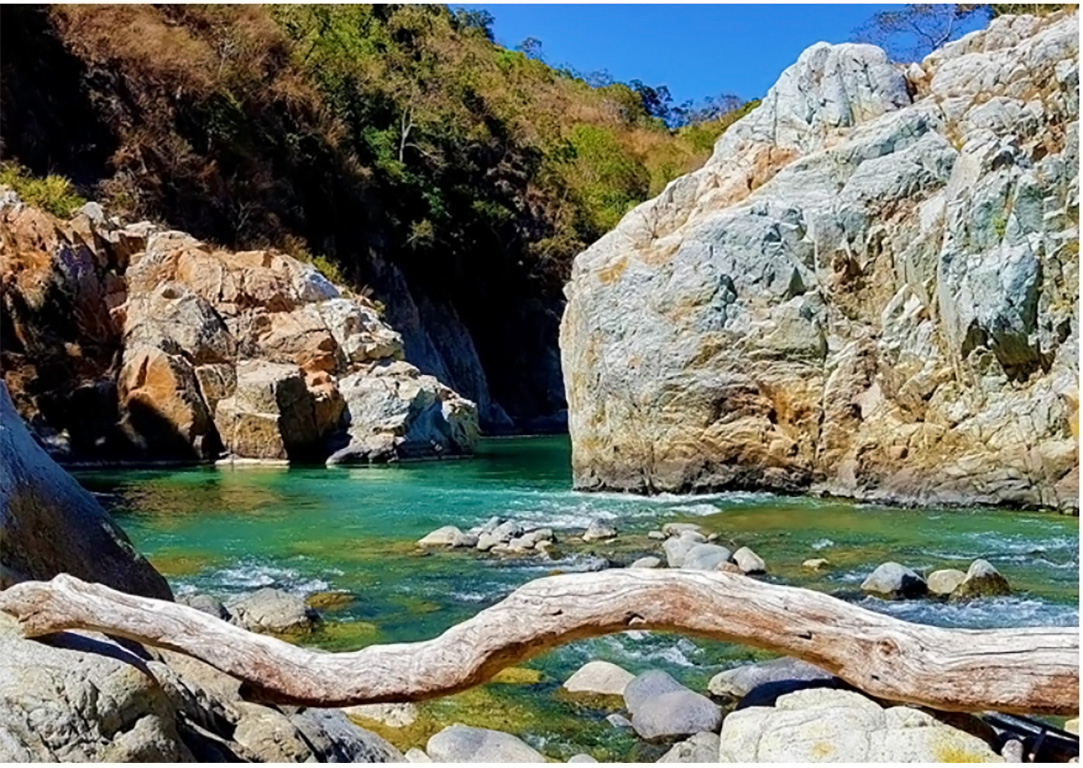In spite of the fact that Abra has been renowned for its scenic and mountain landscapes for many years, there are still many people who haven’t discovered this hidden gem. In this province, My hope is that more people will discover this underrated region of the world and explore its many beautiful tourist destinations and begin planning their own adventures there.
Visit Abra’s beautiful places
Kili Falls & Hot Spring
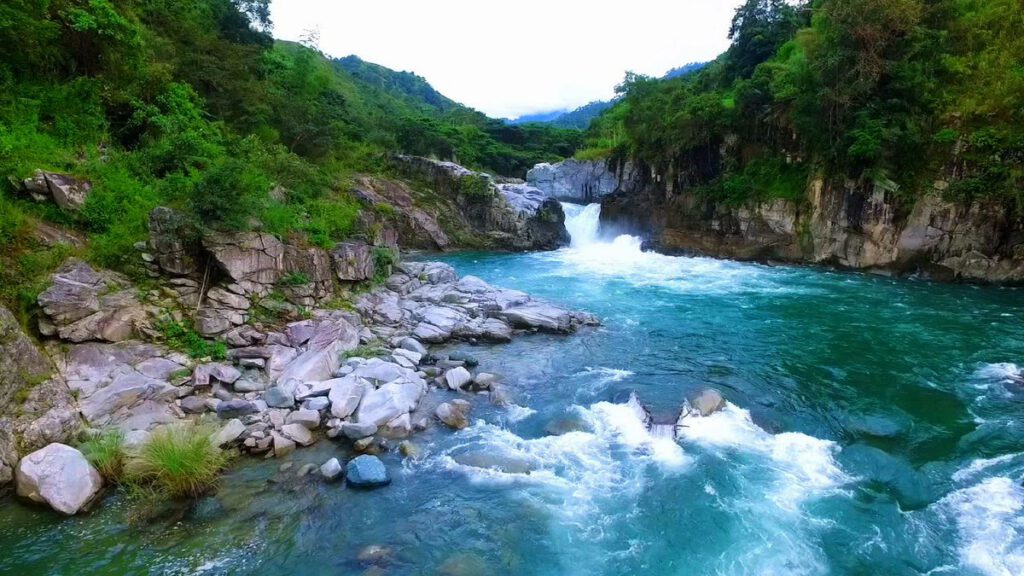
Image Source: http://tarakahitsaan.com/abra/tubo/kili-falls/detail
The main attraction of Kili Falls is not just the waterfall, but the hot spring that flows from behind the main cascade into an icy-cold river in Abra which is one of many beautiful places you can visit all year round. This falls is not the lone attraction here but also one of the best tourist attractions in Abra. The locals constructed a wading pool beside it, and the temperature is perfect for dipping. This place is often all to yourself at the most relaxing time of the year.
Kaparkan Falls
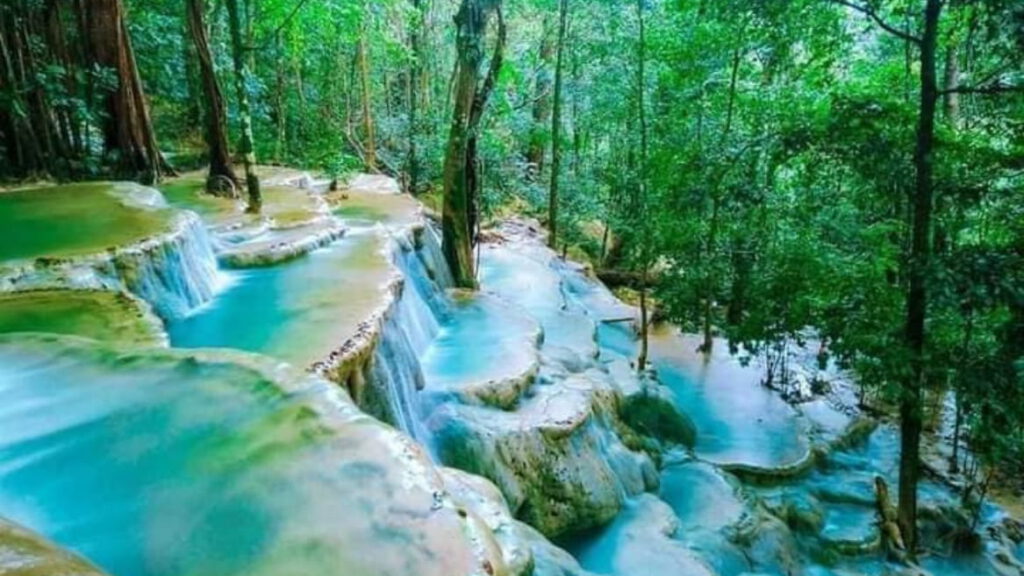
Image Source: https://www.wowcordillera.com/2022/07/enchanted-kaparkan-falls-in-abra-now.html
Abra’s waterfall is one of the best reasons to visit it. Not because of its size, but because of its extraordinary appearance. Kaparkan Falls is unique among most waterfalls in the Philippines and one of the best tourist attractions in Abra. Unlike most waterfalls in the Philippines, which are formed by roaring cascades, it features multiple terraces that gently cascade from the forest floor.
[adToAppearHere]
Piwek Rock Formation
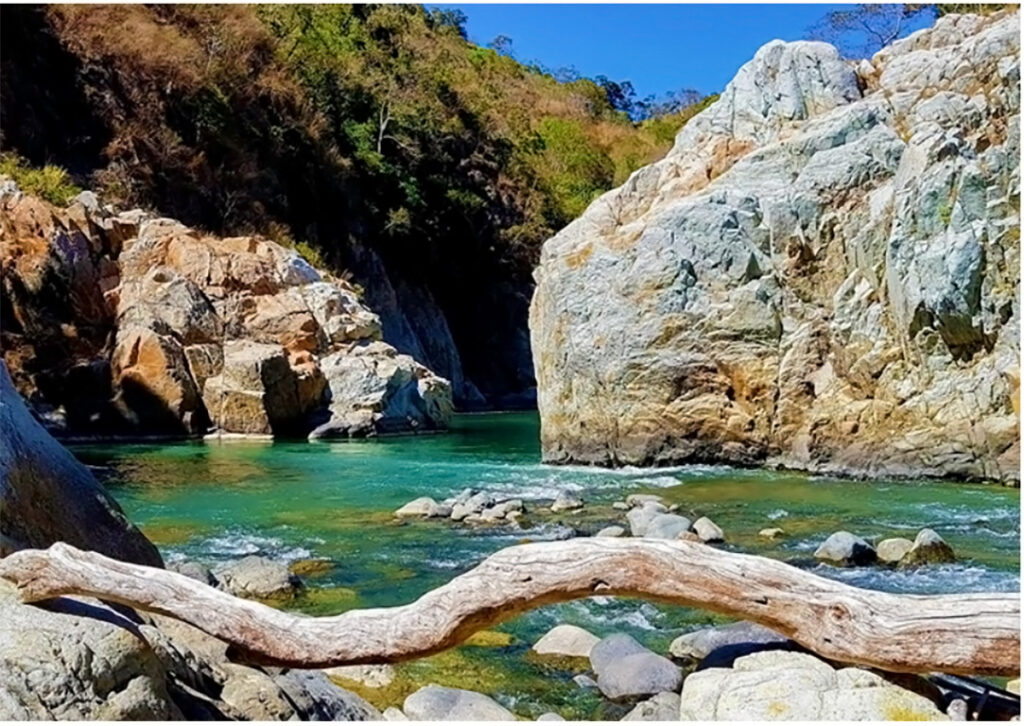
Image Source: https://www.detourista.com/guide/abra-best-places/
Piwek Rock Formation is one of the best tourist attractions in Abra. Getting to this location is quite a challenge. However, the view it provides is simply beyond words. Biyahe ni Drew once featured this as one of the tourist areas in Abra. The Piwek Rock Formations are another cluster of white rock and boulders along the river, similar to the Tinipak River in Rizal. In addition to the turquoise and clear water of the river making this even more appealing to visit, these rock formations are becoming a popular jumping spot as well. There are several high points in this place, the highest of which is about 11 meters high. Locals enjoy jumping off this point. And many tourists have already tried it out.
Abualan Cave
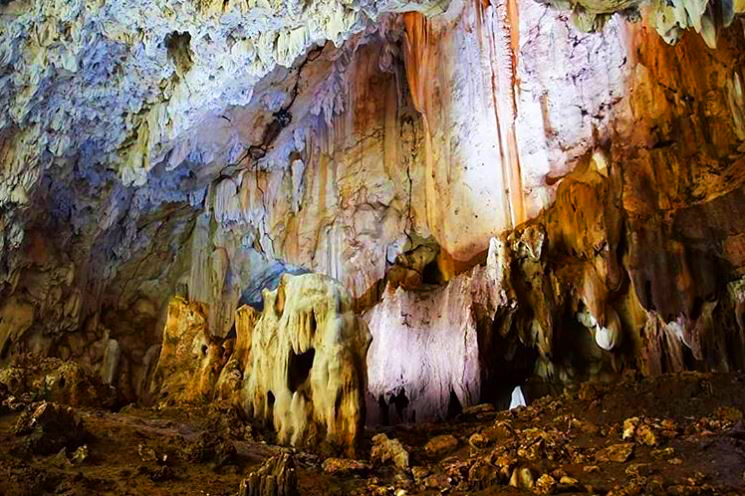
Image Source: http://tarakahitsaan.com/abra/san-juan/abualan-cave-guano-cave/detail
The narrow entrance may seem like a normal cave entrance, but there are actually a lot of rooms and columns inside, and there are many stalactites and stalagmite rock formations that you will find here as well. In some ways, it is similar to Longog cave that can be found in Kapangan, Benguet. During World War II, it was a safe haven for residents of the town. Furthermore, it is sometimes referred to as Guano cave because of the presence of bat pooping. Yes, there are quite a few bats that inhabit here. The cave is currently one of the emerging tourist attractions in the province of Abra. However, it remains largely undeveloped and the local authorities should take steps to develop the cave in a sustainable way so that it will help bolster community development.
[adToAppearHere]
Gabriela Carino-Silang Gallery of Fine Arts
Image Source: https://www.citysearchphilippines.com/place/gabriela-silang-museum-of-fine-arts/
A visit to the former headquarters of Gabriela Silang is also worthwhile in Tayum. She is widely known as the Joan of Arc of Ilocandia for leading the Philippine independence movement. The Gallery is considered as one of the best tourist attractions in Abra. Located within the compound of the Gabriel Silang compound is a privately owned museum that houses the collections of retired Philippine Ambassador Rosario V. Carino, known as Gabriela Silang Gallery of Fine Arts. A former ambassador’s gallery is filled with sculptures, documents, paintings, artifacts, books, furniture and documents from all over the world he collected during his career. A few of the most prized pieces include Juan Luna, Fernando Amorsolo, Pablo Picasso, Pierre-Auguste Renoir, Domenico Ghirlandaioto, and others.
Sapilang Falls
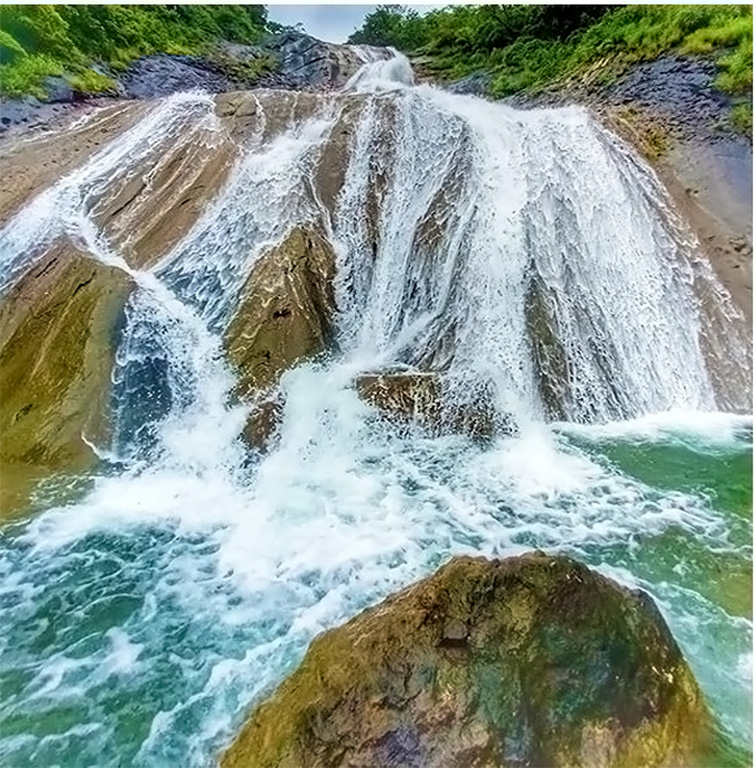
Image Source: https://pinayexpat.com/abra-philippines-beautiful-province/
It is a multilayered waterfall that has numerous natural pools within each layer. Sapilang Falls is one of the largest waterfalls in the world and also one of the best tourist attractions in Abra. The highest part has the grandest waterfall. Sapilang Falls greets and welcomes everyone to the rustic realm of the fall. It will take you 30 minutes to get here from barangay Sagap, crossing through forested trails for about 30 minutes. Also note that you will also have to cross a river, so be prepared for a little dampness.
Despite the fact that the falls cascade from one spot to another, they are not all identical. The first fall that one sees is tall and thin, and has a variety of layers. The second fall, on the other hand, is surrounded by a broad and bare rock face and is easily climbed. This waterfall has a waterfall extension that cannot be seen from below. When arriving in Sagap, one needs to register at the barangay captain’s house.
[adToAppearHere]
Tabungaw Hat Maker (Teofilo Garcia)
Image Source: https://www.atlasobscura.com/articles/traditional-hats-philippines
A National Living Treasure Awardee, Teofilo Garcia makes gourd-based hats called kattokong nga tabungaw, or kattokong nga upo. Tabungaw, the vegetable from which they are derived, is the hat Garcia’s people in Northern Luzon wear for graduations. Ilocano children wear them. During the Spanish Inquisition, revolutionaries wore their brims to fight against the Spanish. Farmers sheltered under them while plowing fields.
In order to make his all-weather headgear, he grows and harvests native gourds himself, hollows them out, dries them, and inserts finely woven rattan mats before varnishing the top in bright orange or red. In his village, he may be the last tabungaw hat maker left in the Philippines. He is currently teaching his craft to local youth. He welcomes visitors to his workshop and encourages them to purchase a hat in support of tabungaw-making traditions.
Tangadan Tunnel
Image Source: https://abra.gov.ph/2017/11/09/tangadan-tunnel/
In the municipality of San Quintin, Province of Abra, Philippines, the 40 meter Tangadan Tunnel is a popular landmark as part of a road connecting Abra with Ilocos Sur. As a symbol of Abrenian defiance and hardiness, the ‘Usok’ in Tangadan is more than a welcome tunnel.
The Tangadan tunnel was built in 1934 as a result of a necessity to divert the old road, which was steep and difficult to negotiate. It took more than fifty workers and two years to break through solid rocks and to build a crude structure. They hammered, drilled and blew through the solid rock, which resulted in a crude structure. There was no reinforcement in the walls, so when the rain came it loose rocks fell and caused damage to the building. Two attempts were made by the Allied Forces to destroy the tunnel in order to impede the advance of the Japanese soldiers, but the tunnel was not totally destroyed.
[adToAppearHere]
Only in 1961 was the restoration of the tunnel started and thanks to the efforts of former congressman Lucas Paredes, the restoration works finally began in order to make the tunnel more accessible to people. Lucas Paredes got an appropriation for the restoration and improvement of the tunnel.
Food delicacy in Abra that you must try
Patupat
Image Source: https://www.lakwatserongtsinelas.com/2014/02/province-of-abra-philippines-best-kept.html
There’s nothing better than serving patupat with muscovado sugar if you’re visiting the province of Abra.
Patupat, from the northern region of Luzon, is another popular Filipino delicacy and pasalubong. An ilocano version of suman, this delicacy is cooked in coconut milk with sugar, rolled in banana leaves, and steamed. Originally prepared in summer during sugarcane harvest, patupat is a popular Filipino snack served with brewed coffee during special occasions in Bontoc.
A traditional method in the region of processing sugarcane juice to form solids called sinuklob involves molding empty half coconut shells into molds and simultaneously preparing patupat.
Lechon de Abra
Source of Image: https://www.facebook.com/abrenian/posts/pfbid0J8mXq1aNrjFH6LAzeiaqnhxa9Cb7hrn3GhbC68p4Gjr8QH5zHKYVDJMMMujnW4Cal
There are many similarities between the lechon in Tacloban City and the one in Abra. Abra lechon is stuffed with thinly sliced leaves and seasoned with plenty of chopped garlic, pepper and salt.
Lechon, a cholesterol-rich dish consisting of roasted whole pigs, chickens, and cows, is a traditional Spanish dish in Abra. In the Philippines, the dish was originally introduced to the country as a part of Spanish cuisine, and similarly, the technique can be found in many countries where Hispanics live and eat. This method of roasting has been around for a long time, and leaves the meat with a crispy skin and very moist inside.
[adToAppearHere]
There is another way to prepare lechon in Abra, where it is stuffed with a plant called karimbuaya, or Euphorbia neriflolia, more commonly known as hedge euphorbia in English, or soro-soro in Tagalog. Karimbuaya is a cactus-like plant with oblong fleshy leaves.
When making the lechon stuffing, karimbuaya leaves are thinly sliced and seasoned with salt and pepper, along with plenty of chopped garlic to bring out the garlicky-spicy and zesty-tangy taste, then mashed and mixed by hand to bring out the aroma. After the herb-stuffing is completed, it is, of course, stuffed inside the hollow stomach of the pig so that all of the yummy flavor of the herb-stuffing permeates the entire pig and invites the air with mouth-watering aroma and flavors.
Rather than eating their lechon with the liver sauce so beloved by other provinces, Abrenians prefer to eat their lechon stuffed with karimbuaya and bagoong with kalamansi.
Abal-Abal
Image Source: https://banguedenio.wixsite.com/abra/single-post/2017/10/31/taste-of-abra-abal-abal
The abal-abal, also called salagubang in Tagalog, is the larvae or grubs of the species. In addition to its popularity as a delicacy, the protein-rich grubs are also edible and, according to many “Gourmands”, are even more palatable than the adult species. Among Ibanags, Itaweses, and Ilokanos, abalin is a popular fare, considered a special delicacy. Locals consider these exotic foods as not only healthy but also delicious and gather them near or on river banks during the rainy season or prior to the onset of abal-abal season (May-June).
Brown beetles, called abal-abal, appear in May after the soil has been softened by early rains.
In the early mornings after rains, Abal-abal hunters gather near the sandy soil of riverbanks where they catch brown burrowing beetles. Many of the abal-abal hunters from the whole community will be there ready to catch them, armed with nets and other proven contraptions. There are even those who believe that putting pomade on your hair will attract the abal-abals and make it easier to catch them.
Usually, abal-abal and ararawan are cooked with vinegar and salt to taste, kinirog style. At the beginning of rainy season in Abra, pan-fried beetles are always a special treat, combining sour, salty, garlicky flavors with chewy, mushy textures that make anyone cringe.
[adToAppearHere]
Using salt, the abal-abal is roasted with its head and body removed before cooking, leaving only the wings and feet.
It is fun to catch them alive from sandy beaches and banks along rivers, because you can play banga-banga or tie two beetles to a thread and fly around in circles mimicking a claypot or banga before cooking!
If you had the chance to see a lot of vendors selling edible insects next to what used to be a fairway’s lumber and hardware store along Santiago street, then you would already know these edible insects are already available.
Dinaldalem
Image Source: https://www.angsarap.net/2017/03/17/dinaldalem/
Often times, dinaldalem is referred to as Igado. Dinaldalem comes from the word dalem, which means liver in the Ilocano language. This dish consists of thin slices of pork meat and liver stewed in vinegar and soy sauce. It is quite common for the pork innards to be added to the dish which would make it more of an igado dish but they are still considered dinaldalem by many people.
[adToAppearHere]
There was no refrigerators in rural areas at that time, so dinaldalem was cooked dry and without any vegetables to extend the shelf life of the dish. Most people like to cook dinaldalem with an oily sauce, which is very good with rice. That was of course the time when refrigerators were less common. Some also added some chick peas and green peas, both of which will contribute to the dish’s flavour and appeal.
Cascaron
Image Source: https://www.kitchenlovecatering.com/blog/bitsu-bitsu-carrioca-or-cascaron-with-orange-liquor-caramel-sauce
A cascaron is a Filipino donut which is made of glutinous rice, coconut flakes, and sugar and is commonly sold on skewers. The name is derived from Spanish cascarón, referring to its common spherical shape as well as its crunchy exterior. It is generally shaped like a ball and sold on skewers, however it can also be elongated or pancake-like. Cascarón is not to be confused with cascarón, a hollowed-out chicken egg filled with prizes derived from the same name, which is also known as cascarón.
Aside from the carioca, which is known for its unique properties, there are several other names for it, including the tinudok and the bitsu-bitsu, which is a Chinese Filipino version of youtiao made from regular flour, which is also known as the bitsu-bitsu. There are a variety of cascarons which are shaped like flattened ovals that are known among the Ibanags known as pinakufu and paborot, respectively. They are also known generically called bunuelo, after a similar fritter that is made from regular flour and derived from it.
[adToAppearHere]

